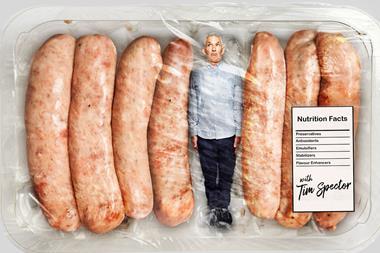I'm not sure it was a good idea to watch Extreme Slimmers (ITV, 9pm, 13 January) in my plump post-Christmas state, but I figured that instead of making me feel worse about my festive excesses, hearing about people with far weightier weight problems would allow me to indulge in a welcome bit of schadenfreude .
The programme told the story of five people who had taken extreme action to slim down, in the main undergoing dangerous surgery to introduce gastric bands and bypasses. Predictably it focused most heavily on Colin, who'd lost the most weight - 45 stone.
Colin had first graced our screens in 2007 in the film Lose 30 Stone or Die and at his heaviest weighed in at 60 stone, rendering him virtually bed-ridden and unable to wash, dress or go to the toilet without help. Cue lingering before-and-after shots of his excess fat, which once lost left him with more than a stone of excess skin hanging down to his knees. Ditto the four others, one of whom, having lost 15 stone, declared that her ambition was now to achieve a Barbie body. None of the others' weight loss seemed as impressive as Colin's, however, underscoring the main problem with the programme.
It was virtually impossible to look beyond the physical devastation wrought by the five's weight gain and subsequent loss. It didn't help that while the documentary makers empathised with their subjects, their questions were decidedly two-dimensional, focusing almost entirely on the psychological reasons they had become fat - unhappy childhoods featuring prominently - at the expense of physical reasons.
Mentions of diet and exercise were conspicuous by their absence. Only one - Charlie - had lost weight through a strict diet and exercise regime, but this obviously lacked the drama of a gastric band , so he didn't feature as prominently, despite, like the others, confessing to being a food addict . It was a lost opportunity and conveyed the message that, like the effects of ageing, the effects of excessive weight are best tackled by extreme surgery.
For a programme supposedly devoted to the trials and tribulations of the overweight, it was a shockingly lightweight affair. Little more than a freak show, in fact.
The programme told the story of five people who had taken extreme action to slim down, in the main undergoing dangerous surgery to introduce gastric bands and bypasses. Predictably it focused most heavily on Colin, who'd lost the most weight - 45 stone.
Colin had first graced our screens in 2007 in the film Lose 30 Stone or Die and at his heaviest weighed in at 60 stone, rendering him virtually bed-ridden and unable to wash, dress or go to the toilet without help. Cue lingering before-and-after shots of his excess fat, which once lost left him with more than a stone of excess skin hanging down to his knees. Ditto the four others, one of whom, having lost 15 stone, declared that her ambition was now to achieve a Barbie body. None of the others' weight loss seemed as impressive as Colin's, however, underscoring the main problem with the programme.
It was virtually impossible to look beyond the physical devastation wrought by the five's weight gain and subsequent loss. It didn't help that while the documentary makers empathised with their subjects, their questions were decidedly two-dimensional, focusing almost entirely on the psychological reasons they had become fat - unhappy childhoods featuring prominently - at the expense of physical reasons.
Mentions of diet and exercise were conspicuous by their absence. Only one - Charlie - had lost weight through a strict diet and exercise regime, but this obviously lacked the drama of a gastric band , so he didn't feature as prominently, despite, like the others, confessing to being a food addict . It was a lost opportunity and conveyed the message that, like the effects of ageing, the effects of excessive weight are best tackled by extreme surgery.
For a programme supposedly devoted to the trials and tribulations of the overweight, it was a shockingly lightweight affair. Little more than a freak show, in fact.













No comments yet